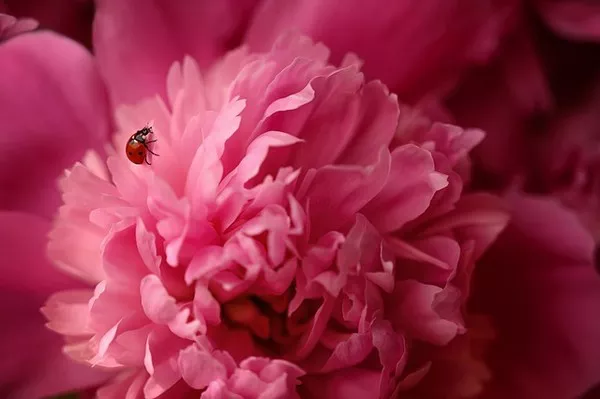Peonies, with their lush blooms and captivating fragrance, have long been cherished by gardeners and flower enthusiasts alike. These exquisite flowers are not only admired for their beauty but also hold cultural and symbolic significance across various cultures. In this comprehensive guide, we delve into the fascinating world of peonies, exploring their origins, characteristics, varieties, and cultivation techniques.
Origins and History
Peonies (Paeonia) have a rich and storied history that spans centuries. Originating primarily from Asia, these perennial plants have been cultivated for thousands of years, with evidence of their cultivation dating back to ancient China. In Chinese culture, peonies are revered as the “king of flowers” and are deeply symbolic, representing prosperity, honor, and beauty.
The popularity of peonies eventually spread to other parts of Asia, including Japan and Korea, where they became integral elements of traditional gardens and art forms. In Europe, peonies were introduced during the Middle Ages and quickly gained popularity among nobility and aristocracy for their exquisite beauty and fragrance.
Characteristics of Peonies
Peonies are characterized by their large, showy blooms and lush, dark green foliage. These perennial plants belong to the Paeoniaceae family and are classified into three main types: herbaceous peonies, tree peonies, and intersectional or Itoh hybrids.
Herbaceous Peonies:
Herbaceous peonies are the most common type and are known for their herbaceous stems that die back to the ground in winter. They typically bloom in late spring to early summer and come in a wide range of colors, including white, pink, red, and coral. Herbaceous peonies are further classified based on flower form, including single, semi-double, double, and Japanese.
Tree Peonies:
Tree peonies, unlike herbaceous peonies, have woody stems that persist throughout the year. They produce large, often fragrant blooms in early to mid-spring and come in a variety of colors and forms. Tree peonies are prized for their longevity, with some specimens living for decades and producing increasingly larger blooms over time.
Intersectional Hybrids (Itoh Peonies):
Intersectional hybrids, also known as Itoh peonies, are a cross between herbaceous and tree peonies. They combine the best qualities of both parent plants, producing vigorous growth, sturdy stems, and large, long-lasting blooms. Itoh peonies are valued for their unique flower forms and vibrant colors, making them a popular choice among gardeners.
Varieties of Peonies
Peonies come in a diverse array of varieties, each with its own unique characteristics and charm. Some of the most popular peony varieties include:
Sarah Bernhardt:
A classic herbaceous peony with large, fragrant, double blooms in shades of pale pink.
Bartzella:
An Itoh hybrid peony featuring semi-double to double yellow blooms with a hint of red at the base.
Krinkled White:
A tree peony variety known for its pristine white, single blooms and distinctive crinkled petals.
Coral Charm:
A striking herbaceous peony with semi-double, coral-pink blooms that deepen to a rich coral-red as they mature.
Shimanishiki:
An unusual tree peony variety with variegated pink and white flowers, reminiscent of a watercolor painting.
These are just a few examples of the many peony varieties available to gardeners, each offering its own unique beauty and charm.
Cultivation and Care
Growing peonies can be a rewarding experience, but they require proper care and attention to thrive. Here are some essential tips for cultivating and caring for peonies:
Site Selection:
Peonies thrive in well-drained soil with full sun to partial shade. Choose a site with good air circulation to prevent fungal diseases.
Planting:
Plant peonies in the fall, ideally in September or October, to allow them to establish their root systems before winter. Dig a hole that is wide and deep enough to accommodate the roots without bending or crowding.
Watering:
Peonies prefer moderate moisture levels, so water them deeply once a week during dry periods, especially during the growing season and while they are blooming.
Fertilizing:
Apply a balanced fertilizer in early spring before new growth appears, and again in early fall after flowering has finished. Avoid over-fertilizing, as this can lead to weak, leggy growth.
Support:
Provide support for tall varieties, such as tree peonies, to prevent the heavy blooms from bending or breaking. Use stakes or rings to support the stems, being careful not to damage the roots.
Mulching:
Apply a layer of organic mulch, such as compost or shredded bark, around the base of the plants to help retain moisture, suppress weeds, and insulate the roots during winter.
Pruning:
Deadhead spent blooms to encourage continued flowering and remove any dead or damaged foliage to maintain plant health and appearance. Prune herbaceous peonies back to the ground in late fall or early spring.
By following these guidelines, gardeners can enjoy healthy, vigorous peony plants and abundant blooms year after year.
Symbolism and Cultural Significance
Peonies have deep cultural significance and symbolism across various cultures and traditions. In addition to representing prosperity, honor, and beauty in Chinese culture, peonies hold special significance in Japanese and Western cultures as well.
In Japanese culture, peonies are associated with wealth, good fortune, and bravery. They are often depicted in art, literature, and traditional ceremonies, symbolizing prosperity and honor.
In Western cultures, peonies are commonly associated with romance, femininity, and abundance. They are a popular choice for wedding bouquets and floral arrangements, symbolizing love, happiness, and prosperity in marriage.
Conclusion
Peonies are truly remarkable flowers, celebrated for their exquisite beauty, fragrance, and cultural significance. Whether adorning a garden, wedding bouquet, or art piece, peonies never fail to captivate and inspire with their lush blooms and timeless elegance. With proper care and attention, these enchanting flowers will continue to grace our lives with their splendor for generations to come.


